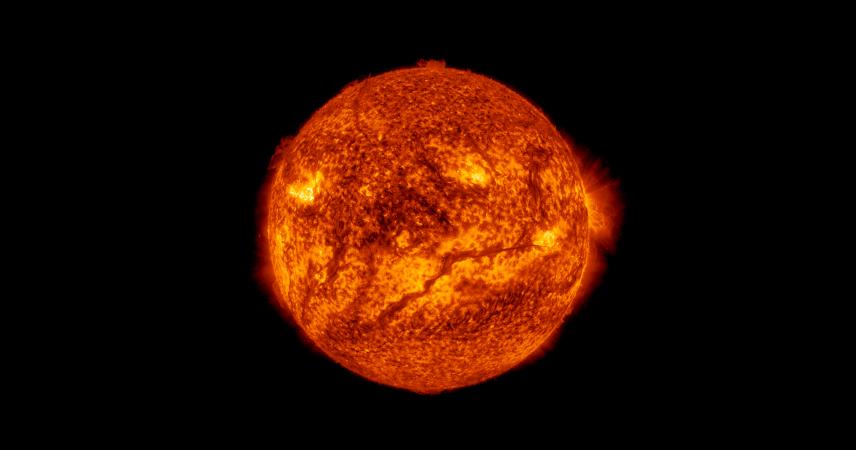The stars are made of plasma, as a result of gas heated up to extremely high temperatures. Like a natural giant nuclear fusion reactor, stars produce energy by transforming hydrogen into helium and progressively into more complex elements. These nuclear reactions make stars shine and allow them to generate the force needed to keep them from collapsing under their own weight.
98% of the mass of our solar system is concentrated in the Sun, which is the reason why all the planets orbit around it. To give us an idea of its size, 1,300,000 planet Earths would fit inside it.
However, the Sun is merely one of the 100 to 400 billion stars present in the Milky Way. According to the astronomer Carl Sagan: “there are more stars in the sky than grains of sand in all the beaches and deserts on Earth.”
The Sun, compared with the stars in the sky, seems huge, although is in fact a medium-sized star. To get a better idea, we invite you to touch and compare the three spheres on the dais.
On the left, the smallest orangey sphere represents our Sun, which is 1,392,000 kilometers in diameter and has a surface temperature of about 5,500 Celsius degrees . The most massive object in our solar system is merely a chickpea on this stellar scale.
In the middle, we find an example of the giant blue star, Bellatrix, in the Orion constellation, which is almost 6 times the size of the Sun and has a surface temperature higher than 21,000 Celsius degrees . On this stellar scale, Bellatrix reaches the size of a tangerine.
Finally, on the right, we can see an example of the giant orange star, Kaus Borealis, in the Sagittarius constellation. This has a composition similar to the Sun’s, but is 22 times larger in size and has a temperature of approximately 4.400 Celsius degrees on its surface. Kaus Borealis would be equivalent to a watermelon on this stellar scale.
This is only a small sample of the different stellar scales. We would have liked to compare the Sun with a giant red star like Betelgeuse, in the Orion constellation, but on this stellar scale Betelgeuse would have reached 76 metres in diameter!
Stars, just like people, are born, live and die. They are born from clouds of gas and dust, they shine thanks to the high temperatures of the gas in their core, where they generate energy. When its gas is about to run out, some star collapse in on itself and produce, in some cases, a huge explosion known as a supernova. Supernovas enrich interstellar space with new elements, such as the oxygen that we breathe or the calcium in our bones. Everything that exists on our planet was formed inside a star that, probably, had a violent death.
